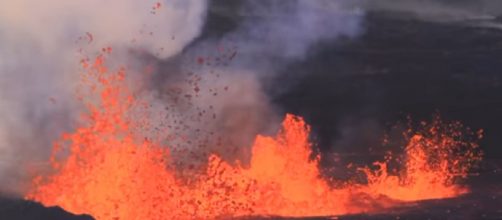The volcano erupted in the Reykjanes peninsula in Iceland. Its location was southwest of the capital Reykjavík not too far from the Keflavik International Airport. This is the main airport in Iceland. The Icelandic Meteorological Office IMO indicated a reduction in the intensity of volcanic activity in the region. IMO describes the fissure as approximately 500-700 meters (1640 feet to 2297 feet) long, and the lava has spread to an area slightly less than one square kilometer. However, despite a reduction in activity, the flow of lave remains a matter of concern.
This falls in the category of a natural disaster and could have far-reaching consequences, especially in Iceland. This is because the volcano's heat would lead to the melting of ice shelves quickly. Iceland is home to several attractive travel destinations.
CNN says the IMO is aware of the implications and is monitoring the gas emissions. The authorities advised citizens to maintain a safe distance from the major Reykjanesbraut highway. It seems gas pollution may not result in discomfort for people, but they should avoid getting too close to the eruption source.
The effects of the volcano in Iceland
There are concerns in certain quarters about the effect of the volcano on surrounding regions.
The location of the volcano is not far from the main airport of Iceland. The Keflavik International Airport is about a half an hour drive from the peninsula. Falling ash from the volcano could pose problems to travel by air, and the aviation color code for the airport was lowered from red to orange. This is because the IMO predicts minimal ash fall from this eruption. CNN adds people were advised to take necessary precautions. These include keeping the windows shut to prevent the entry of ash and gases into the rooms. They should try to avoid going out. That way, they can escape from inhaling the volcanic gases. Scientists mourned the death of the Okjokull glacier in Iceland, a victim of climate change.
Breakaway icebergs and glaciers could disturb the ecological balance.
Earthquakes increased in Iceland prior to the eruption of the volcano
The IMO confirms the volcano erupted after increased seismic activity on the peninsula. These had given prior indications of something more serious that was in the offing. CNN goes on to add there were nearly 400 earthquakes in the morning. However, the previous morning, the number of quakes was more than double. The agency cautioned the volcanic gas pollution could extend to distant places. Hence, the people were asked to take necessary precautions to ensure safety from gaseous substances in the air. These could pose health hazards. Assessment is on about the status and amount of SO2 emissions from the eruption.
In April 2020, a media report mentioned that Iceland was seeing renewed volcanic activity after centuries.
Volcano erupts at Fagradalsfjall in Iceland
According to the BBC, Iceland has recorded thousands of earthquakes in the past three weeks. Finally, a volcano erupted southwest of Iceland's capital Reykjavik. It is at Fagradalsfjall Reykjanes peninsula. The last eruption happened nearly 800 years ago. In 2010, another volcano erupted in Eyjafjallajokull. It affected air traffic across Europe. The present one is not likely to spew much ash. Hence, disruption of air travel might not happen. A coastguard helicopter surveyed the area and sent back images of the molten lava on its journey downhill. It seems there was a mild earthquake in the region several hours earlier. Tremors are not new in Iceland because it straddles two tectonic plates. These are drifting in opposite directions.


